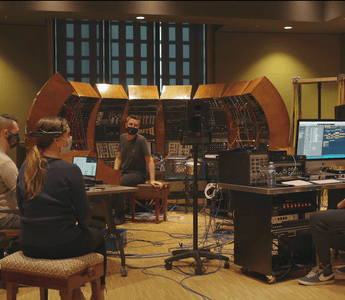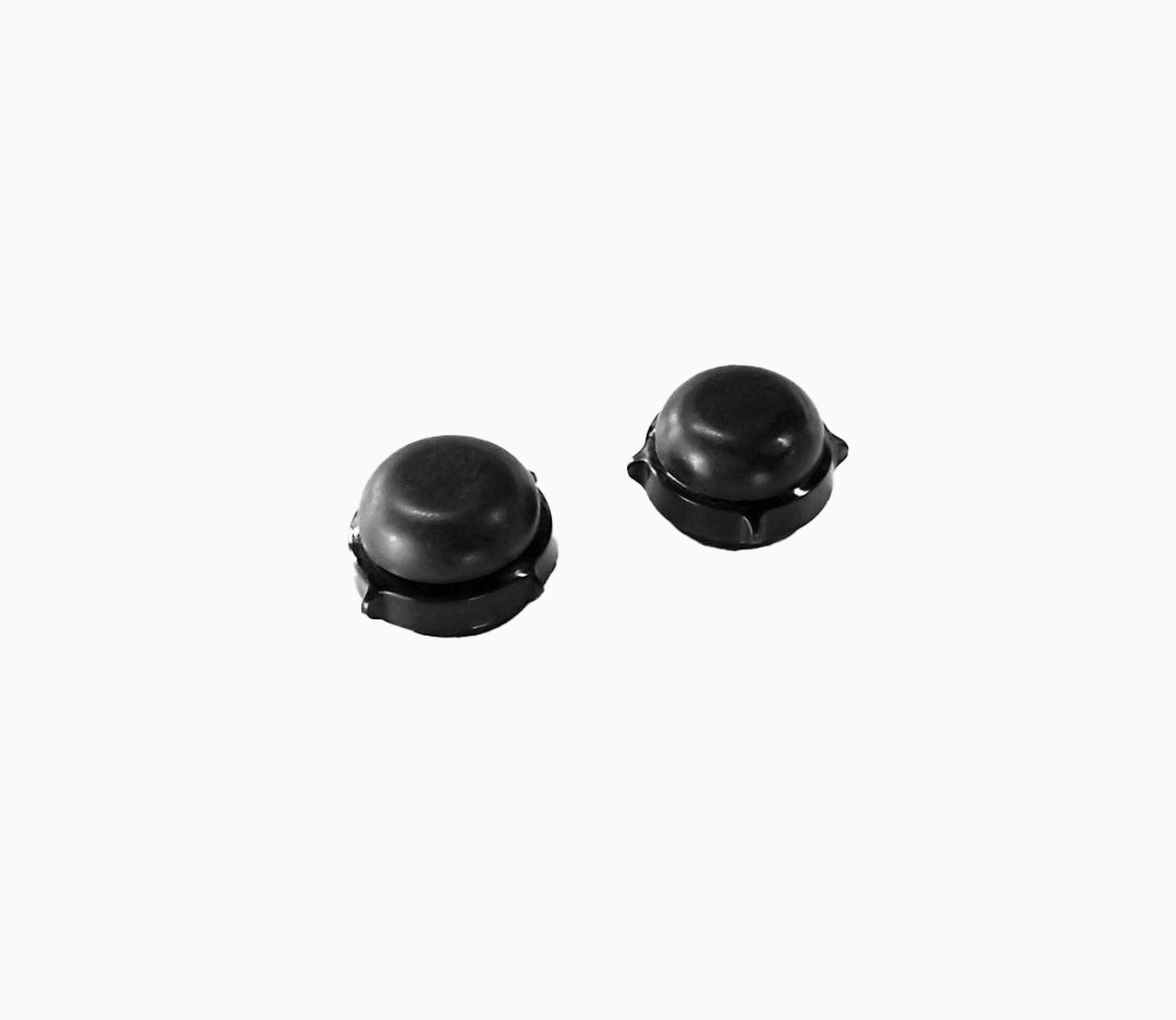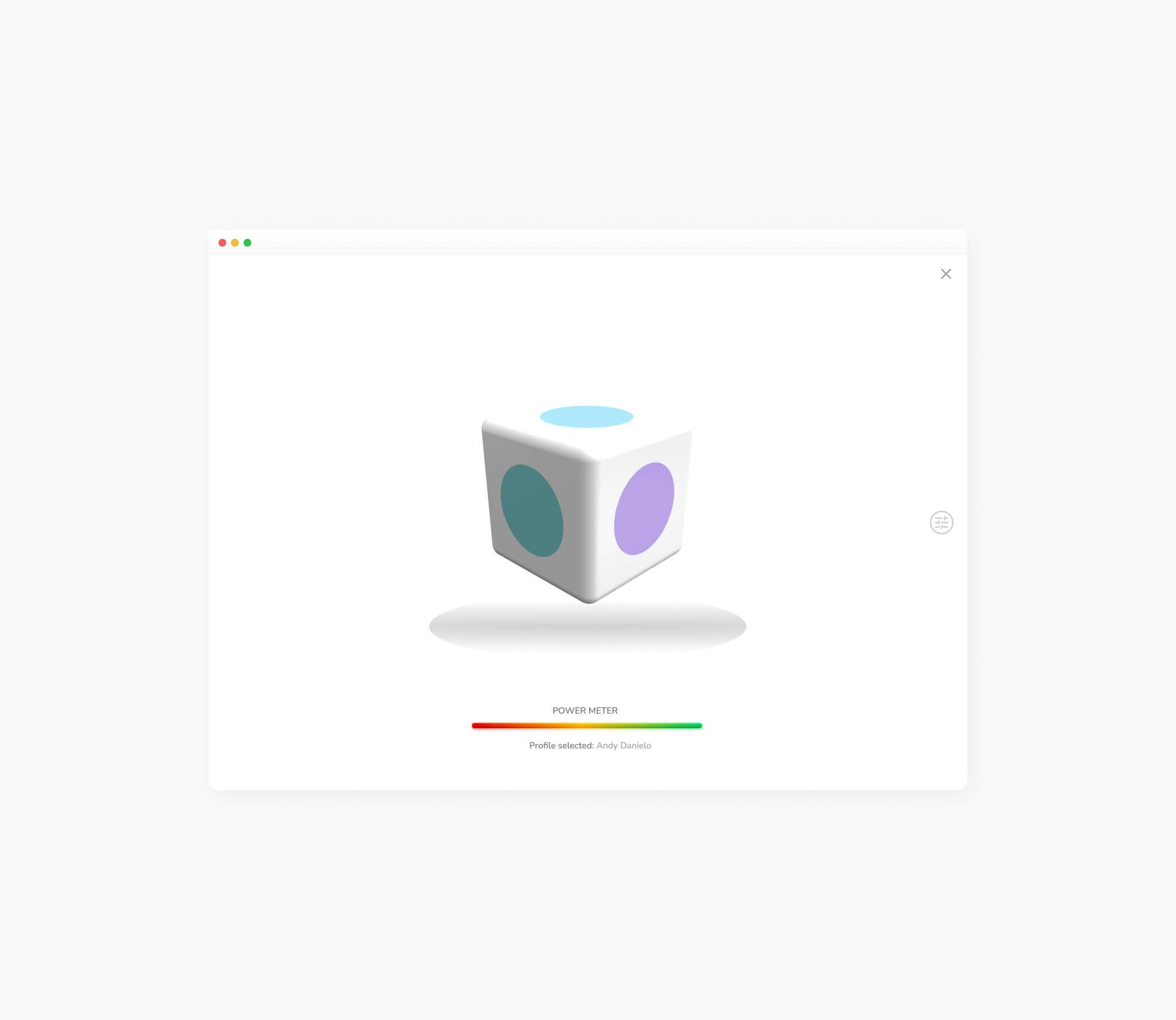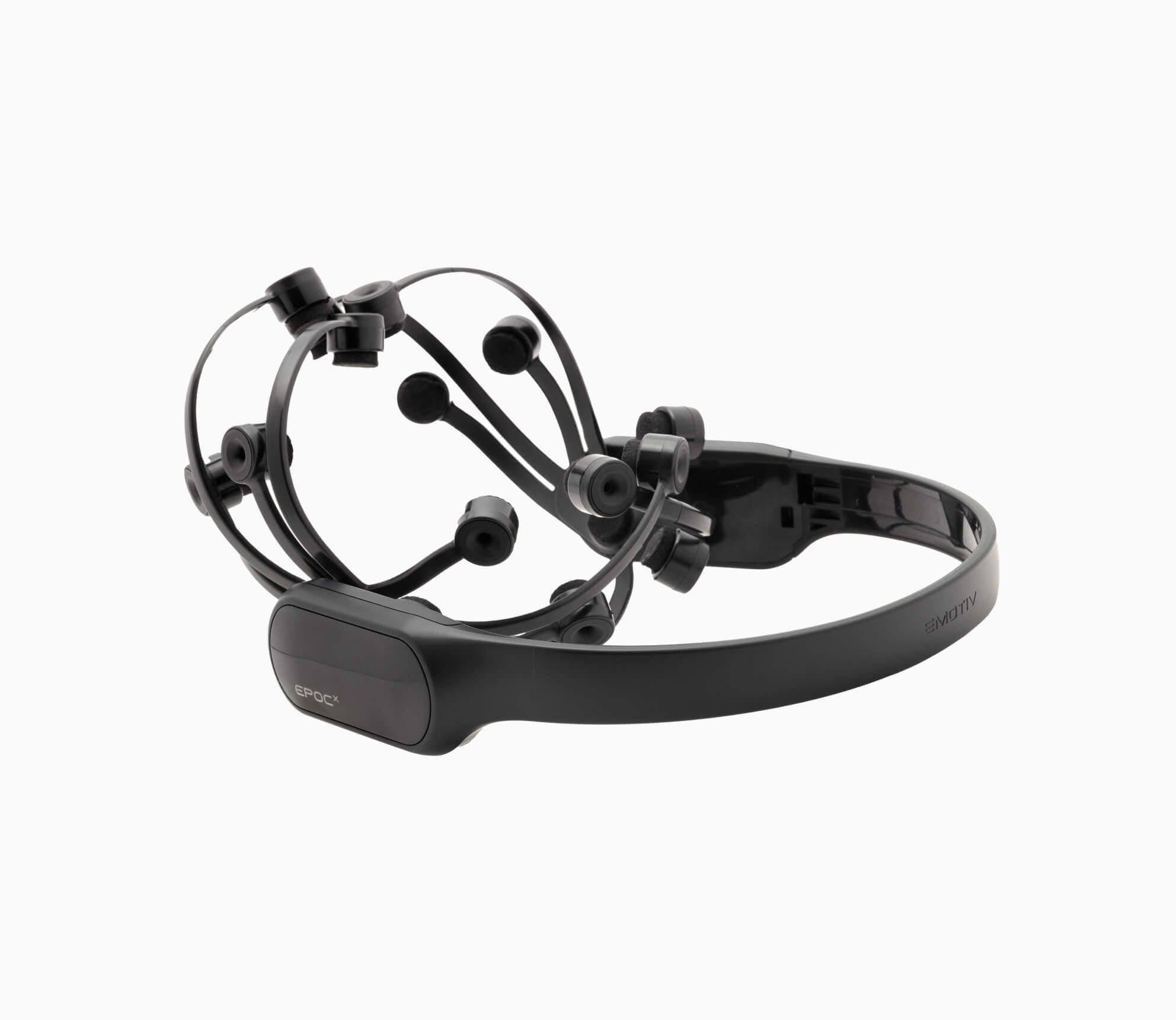Using just the mind to create music. It might sound a little far-fetched to a lot of people. But, that is precisely the route that musician and popstar Angie C has taken. A lover of music and science – Angie Coombes (aka Angie C) has found the perfect way to merge two of her passions into creating something truly unique. With her latest album “Star Seeds” dropping recently, Angie C spoke with EMOTIV about everything music and using Brain-Computer Interface (BCI) devices to create a really special genre of music and sound that she truly believes could be the future.
Your passion for music, where do you think it comes from?
My passion for music stems back to when I was a little girl. I was about 3 years old, when my mom enrolled me in music lessons. I remember I would play the piano for hours on end, and loved writing my own songs and melodies. My parents were both musical – my mom was a singer, and my dad played guitar.

Could you tell us that one moment, as a child, when your brain lit up like a Christmas Tree after hearing, what you thought, was perfect music?
Definitely the moment I heard Beethoven’s Moonlight Sonata. I was 8 years old at the time, and I begged my piano teacher to teach me how to play it. That piece of music changed my life. Every time I play it, it takes me to another place entirely.
Would you expand on your two loves – music and science and how they are more connected than most might imagine?
Music and science are certainly more connected than most might imagine. For example, learning the rhythm and timing aspect of music has been shown to help children develop mathematical skills early on in life. Another fun fact is that music is incredibly unique in that it engages the entire brain – not just the left or the right hemispheres alone. We have traditionally viewed science and music as separate, unrelated entities. But, to me, that is a siloed viewpoint, and we need to change that in our society. The educational system almost deems music and art as unimportant. In my opinion, however, they are absolutely crucial for brain development, because they get the whole brain working in a synchronized manner.

You wanted to become a doctor, but circumstances meant you couldn’t fulfill that dream. However, having merged music with science so successfully, have you found a way to enjoy the best of both worlds?
Yes, absolutely! Blending music and science has brought me a lot of joy. It really pushes me to think outside the box on many different levels. To be honest, when I start a new project, I actually start with the artistic creative vision FIRST, rather than coming at it from a purely logical, scientific perspective. I will do things like draw a picture of the design, or write out a description of how I think the pieces of the project will fit together. What’s interesting is that every time I do this, people with related expertise or skills magically appear in my life. They are interested in the subject area, and we subsequently partner to bring the project to life. It’s actually quite a fun process, and allows us to bridge seemingly separate fields to foster creativity and innovation.
How does it feel to be one of the pioneers in using BCI devices for creating and playing music?
It feels amazing and exciting! I still remember the day in 2014 when I came across the EMOTIV website. I discovered that the company had developed a portable EEG headset. About 6 months prior, I had become curious about the possibility of using binaural beats to control seizure activity in patients with epilepsy. I realized that the only way to study something like this would be to do a Masters or PhD. This, in order to gain access to EEG equipment in a hospital setting. I was not that interested in going back to university. So, when I found EMOTIV, I was excited about all of the potential applications of this new technology. Although I have not yet experimented with binaural beats for seizure activity, I have really enjoyed taking things in a more creative direction – by using the EMOTIV EEG headsets in the Fashion Tech and Music spaces.
You were the first person to use a BCI device (EMOTIV’s EPOC headset) while using the iconic TONTO synthesizer. How did it feel to be able to control the music that came out of TONTO, using just your mind?
It was an incredible feeling! To be honest, there was still a degree of uncertainty leading up to our official testing day with TONTO. Our engineer, Mitchell Claxton, had been working on the tech in Vancouver with a small analog synth. My music producer and I were in Calgary putting together the rough demos of the songs. We were discussing the logistics of the recording process with the technicians at Studio Bell where TONTO is housed.
When we finally all met at Studio Bell for our testing day, it was the first time we had all been in the room together with TONTO. We were all kind of holding our breath during setup. But, when those first few brainwave-controlled sounds came out from TONTO. I remember Mitchell threw his hands up in the air and said “It works! It ACTUALLY works!”. That was a pretty proud moment for all of us.
“TONTO, BCI and Music – The Feeling Was Incredible.”
As for the feeling of controlling TONTO with my mind, it was interesting. I had to listen to the changes in the music, and identify the thoughts that I was thinking at the same time. And then, I had to practice focusing on those thoughts in order to elicit a change in the sound. For instance, I was able to control the rate of the low-frequency oscillator (LFO) on TONTO by thinking of a purple flame coming down through my body. Whereas, my friend Jane was able to control things like resonance and cutoff by thinking about flying through the galaxy. The mental cues were unique to each person who tried on the headset. I think could be very beneficial to the end user since it would allow them to create brainwave-controlled music in their own unique way, based upon their own brainwave patterns.
Quite a bit of coverage was given to your TONTO recording, using a BCI device to create music. What was the reaction to it in the musical inner circles?
So far, the reaction has been very positive, especially in the Maker and Synth communities. It was very well received at the Maker Music Festival this year, and was featured by Maker Faire Shenzhen. I expect that interest will build with the release of my album. It is infused with all of the Brainwave-Controlled TONTO sounds. I hope that it inspires other people and artists across the globe to discover new pathways to creativity and innovation. And, of course, I hope that it highlights Neuroscience and the burgeoning field of Neurotechnology. We are living in very exciting times!
There has been and will continue to be a bit of pushback when it comes to melding neurotechnology with music. What do you have to say to the naysayers?
That’s a great question. I think because it is still such a new concept, it does tend to get quite a bit of pushback, especially if people feel uncomfortable or worried about things like mind-control or other people “knowing” what they are thinking. I remember when I was showcasing my Brainwave-Controlled LED dress (called Musethereal), a lot of people seemed kind of freaked out by the thought that someone might be able to know what they are thinking. But, that is not the case with EEG technology. We can of course see patterns of the electrical activity of the brain with EEG technology, but we can’t actually use it to read people’s minds.
“Neurotech, BCI and Music together has Many Uses.”
As for merging neurotechnology with music, I think it’s actually a really good thing, especially for someone who has a physical disability and cannot play a traditional instrument. This will most certainly open a lot of doors for them, and will also lead to more joy in their lives as they create and express themselves through this new medium.
I also think this has exciting implications for music producers. About 10 years ago, after attending a rave, I woke up with the most amazing trance track in my head, but I had no way to get it out into physical reality without spending a lot of time and energy producing it. Later that day, I was chatting with a few DJ producer friends of mine and I said “I can’t wait for the day when we can literally think music into existence.” At the time, I was only sort of half-joking, but now that I am making brainwave-controlled music, I do think that “thinking music into existence” does have a high probability of becoming an accepted way of doing things in the future.
Where do you see the future, in correlation to music and neurotechnology?
In the future, I envision people sitting down at their computers with a brainwave headset/ BCI devices and using it as a tool for making music. I think as the fields of neurotechnology and artificial intelligence (AI) continue to evolve, I do see them continuing to merge together to create predictive algorithms for musical sounds.

For example, if we look at the field of radiology, we know that AI can detect breast cancer more accurately and quickly than the human eye. If we translate that ability to music and neurotechnology, it would make sense that, one day, humans will be able to think of a snare drum, and AI will detect that particular brainwave pattern, recognize “Hey, this is a snare drum”, and then tell the digital audio workstation (DAW) such as Logic Pro, ProTools, etc. to print a MIDI pattern for a snare drum. It may sound far-fetched, but I do believe it will be possible to do this in the next 5-10 years.
Neurotech and the usage of BCI devices, in music, could be beneficial in many ways, particularly for the specially tabled. Your thoughts on BCI devices or this technology bringing about a paradigm shift in how those with special needs make and listen to music?
I think Neurotech and the use of BCI devices will open so many doors for the specially abled. In fact, it already has. Dr. Adam Kirton, who is a Pediatric Neurologist in Calgary, Alberta, Canada, has founded an initiative called BCI4Kids. They strive to connect specially abled children with Brain-Computer Interfaces, and conduct research into how these new technologies can be leveraged to improve the quality of life for these children and their families. One young boy, named John, has been using BCI to create paintings using only his thoughts – it is quite incredible! His Instagram handle is @brainpaintbyjohn if you’d like to check out some of his artwork.
I have had some initial discussions with Dr. Kirton and his group about brainwave-controlled music. I am very excited to see what we are able to create with BCI4Kids.
What are the advantages of using a BCI device to create music? How does it differ from the more traditional methods?
I think the real advantage of creating music with a BCI device is that it removes the need to play a physical instrument. The brain is a vastly glorious thing, and there are so many places we can travel in our mind. I truly feel that BCI technology will be the key to unlocking new frontiers in music. Both my producer, Trey Mills, and I agreed that we have experienced some of the most magical moments in music thus far by using a BCI headset.
Do you see this method taking over the musical landscape?
I think, eventually, it will be common practice to use a BCI device for making music. Technology is constantly evolving and improving on previous iterations. To think that it’s only been 40-50 years since the first personal computers were available on the market. And now we have smartphones that we can literally carry in our back pockets – it’s incredible. I think that once there is more mainstream awareness of BCI technology. The further integrations between neurotechnology, software development, and AI, there is no doubt in my mind that this method of creating music will be a mainstay in the musical landscape.
You made waves (pun intended) when your brainwave-controlled LED dress was showcased at the MakeFashion Wearable Technology Gala in 2016. In the five years since, how far do you think neurotechnology has come? And what do you believe are the future possibilities for this crucial branch of science? Both in aspects of music and a larger sense?
Haha great pun 🙂 I have to say I am very impressed with how far neurotechnology has come in the past 5 years. I originally began working with the EMOTIV EPOC+ brainwave headset in 2016. At the time, some of EMOTIV’s software platform integrations were more fully developed than others. One of the design aspects we had to consider for the brainwave-controlled LED dress was that we needed a computer processing system that would be portable.
EMOTIV’s desktop software program was quite comprehensive, but clearly carrying a laptop in a backpack down a runway was not exactly fashion friendly. So, instead, our engineer developed an app for an Android phone that was able to process the data from the EPOC+ headset and send it to a microcontroller that connected to the LED lights on the dress. Both the microcontroller and Android phone were easily hideable inside a pocket on the back of the garment.
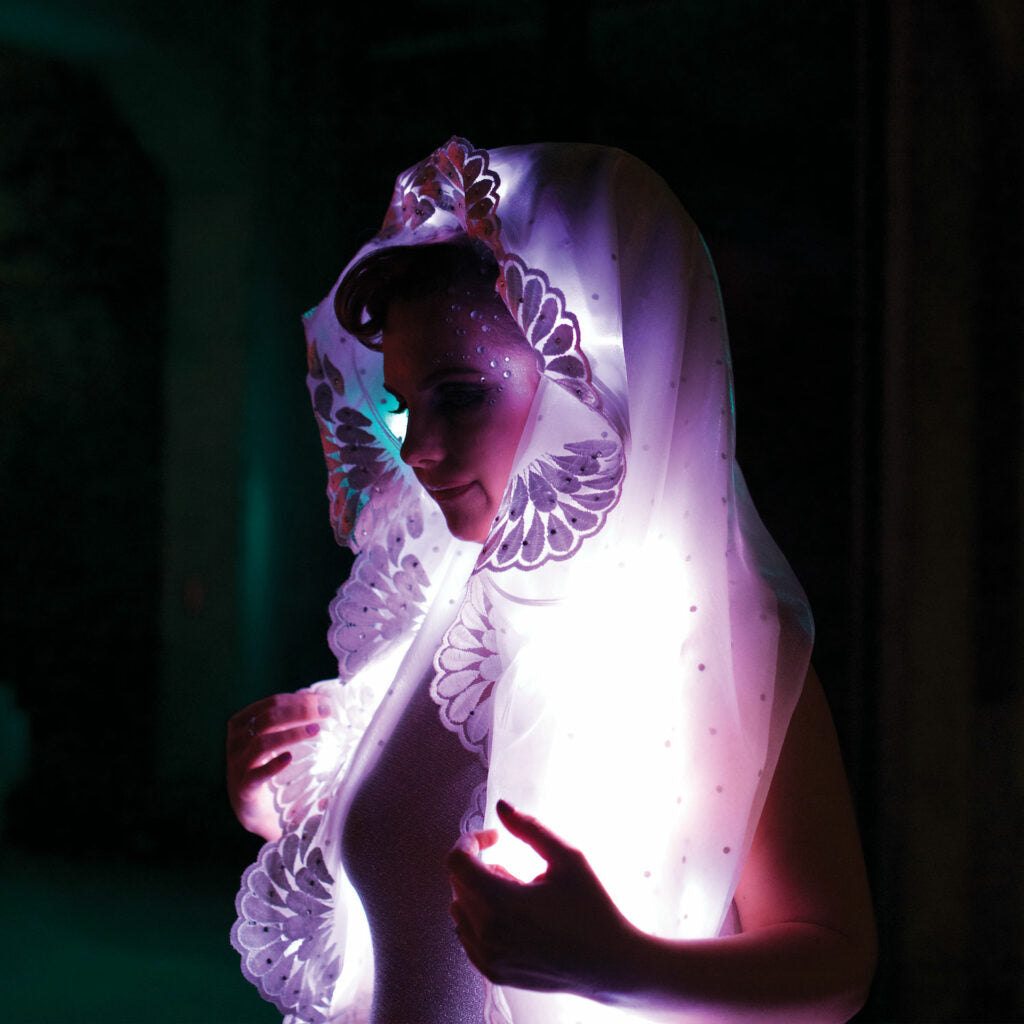
“EMOTIV’s EPOC X Looks Really Good.”
Flash forward to today – EMOTIV’s suite of products and software has positioned the company as the market leader in the Neurotechnology space. I actually recently ordered the new EPOC X headset, and I can’t wait to start playing around with it!
As for future possibilities for this crucial branch of science, I believe we have only just begun to scratch the surface of what will be possible in the future. When I first started taking Neuroscience classes at Dalhousie University in 2002, I was amazed at how young and relatively unexplored the field of neuroscience actually was. It was a shock to me really, because we had made so many great strides in other areas of science and medicine. Why had we not yet invested the same energy and curiosity into studying the human brain?
“Exploring the Mind through Neurotech.”
You would think this would be a focal area of interest, because the brain is what makes us – well…human. But for some reason, maybe due to a perception of its complex nature, we are only just getting started in understanding how the brain and our minds work. BCI devices have, of course, helped a lot there. I think that by exploring the mind through neurotechnological devices, we will have a much better understanding of ourselves and how we humans operate at the end of the day. I think there will be a lot of power in learning how to “hack” our brains in order to achieve greater levels of insight and success.
Could you explain to a listener what aspects in your songs have been infused using BCI Devices? And How do You Create Such Music?
Each song on my album includes a special featured aspect of Brainwave-Controlled TONTO. Because, we only had two days to record, we really had to go in with a solid plan of what to focus on for each song. For instance, the first song on the album, Magnum Cherry, features a Brainwave-Controlled TONTO lead synth melody in the latter part of the song, whereas ‘Worlds Away’ features a “brainwave solo” in the middle part of the song that literally sounds like a spaceship taking off. We also played around with things like brainwave-controlled piano and binaural beats for some of the other songs on the album.

“I Visualized a Purple Flame.”
As for the process, we used EMOTIV’s Emotional State algorithms to control the sound coming from TONTO. Our engineer created a third party software program that would allow us to see which emotional parameters (eg. Stress, Engagement, Excitement) were most active and variable for the person wearing the headset. He would then use those parameters to send a control voltage signal to TONTO via a special box that he made, called the “Brain Box.”
The onus was on the person wearing the headset to determine which thoughts were reliably changing the sound coming from TONTO. For me, things like asking the question “why” silently in my head, or visualizing a purple flame coming down through my body. They allowed me to reliably control things like pitch, LFO rate, and cutoff. It was quite an interesting and enlightening experience.
Your thoughts on companies like EMOTIV and the work they are doing to bring neurotechnology and neuro research into a much broader landscape and demography?
I think companies like EMOTIV are doing amazing things to further the area of brain and neuro research. Aside from the applications of neurotechnology in the music and creative spaces, I am equally excited about the advances that will be made with respect to crowd-sourced neurological research. One thing I found during my university days was that traditional research moves very slowly, and participant pools are limited by location and accessibility. The research-grade headsets that EMOTIV has created truly do remove a lot of the barriers associated with traditional EEG research. Rather than participants having to drive to something like a local hospital setting, they can now simply put on their brainwave headset and connect to the internet in order to participate in a brain research study. It’s a remarkable reality, in my opinion.
You’ve used EMOTIV’s ground-breaking headsets, and created some truly memorable music with it. A word on the technology and what it means to artists like yourself?
EMOTIV’s BCI headsets open the door to a whole new way of being creative. There is so much that we will be able to explore as artists, and I do encourage other artists to experiment with this new way of making music and art. Have some fun with it!
“Star Seeds”, your much-awaited album, released on Friday, Nov 26? A word on what to expect?
I am super excited for my album to have made “landfall” on November 26th. The album is designed to take the listener on a journey from dark and moody, to emancipation and freedom of the mind. I like to use double entendres in my lyrical writing. So there are lots of hidden messages and meaning within the words themselves. I am a huge fan of writers and philosophers like Rumi, where you can read only a few words, but gain so much wisdom out of it, if you let your mind wander, reflect, and contemplate. That’s something that I tried to capture with this album.
Sonically, I would categorize this album as being Electro-Pop, but we did include some fun things like brainwave-controlled piano. There was a 1900 John Broadwood Acoustic Grand Piano in the same room as TONTO, so we decided to record the piano. And then route the sound through the filters on TONTO and manipulate the sound with our brainwaves. It was super experimental, but resulted in a really cool recording, not to mention an amazing story.
Have you stayed true to your normal genre and style of music? Or is there more experimentation and surprises involved in “Star Seeds”?
You know, I feel that I finally “found” my artistic sound with the creation of my “Star Seeds” album. For a number of years, I had been writing and recording either singer-songwriter style music, or doing top-line vocals for electronic dance music. I think creating this album allowed me to merge those two styles of music to find something in between that sonically feels really good, and for this, I have to thank my producer, Trey Mills. He is great when it comes to helping artists find their sound. It’s not only based on their musical styling, but also on who they are as a person.


